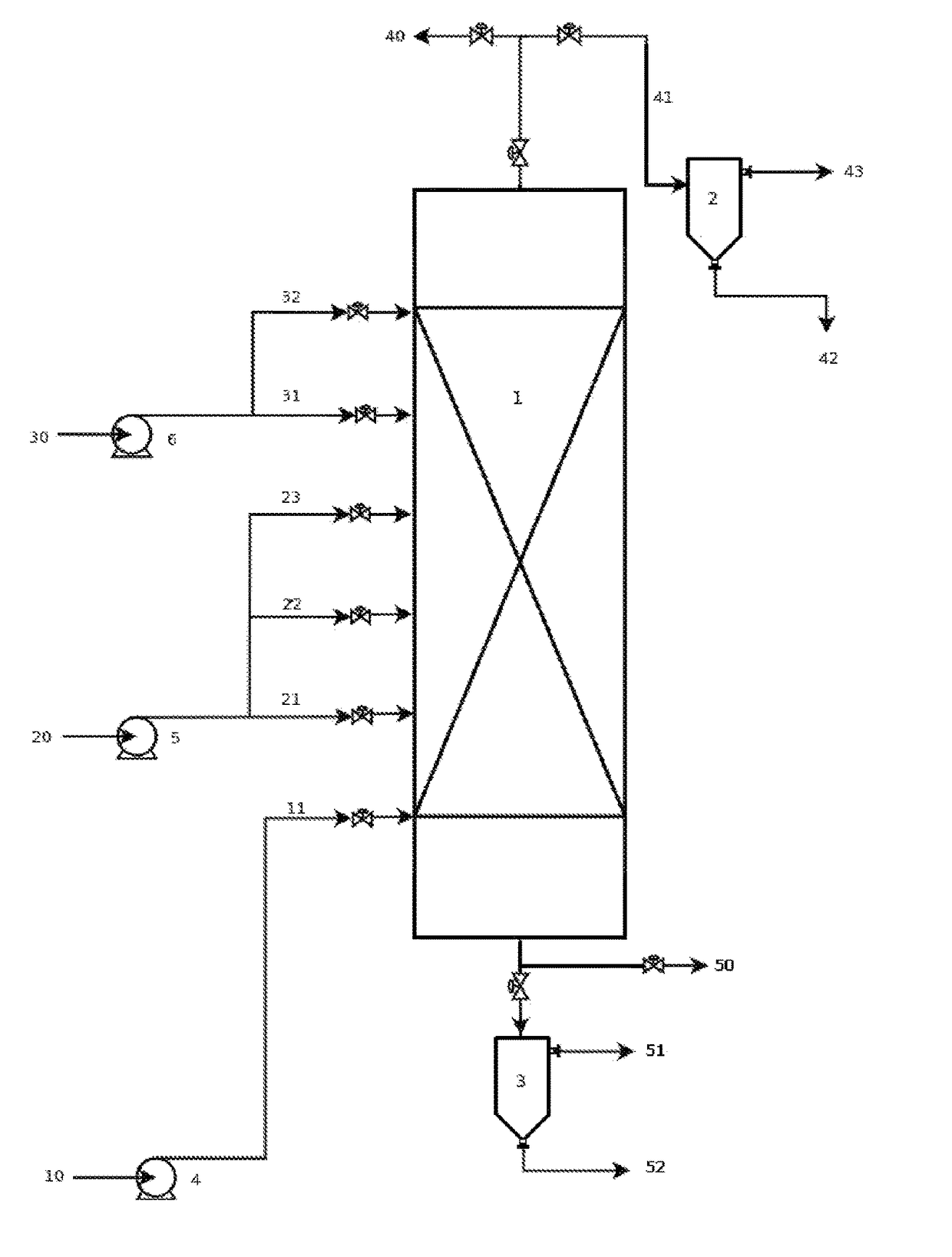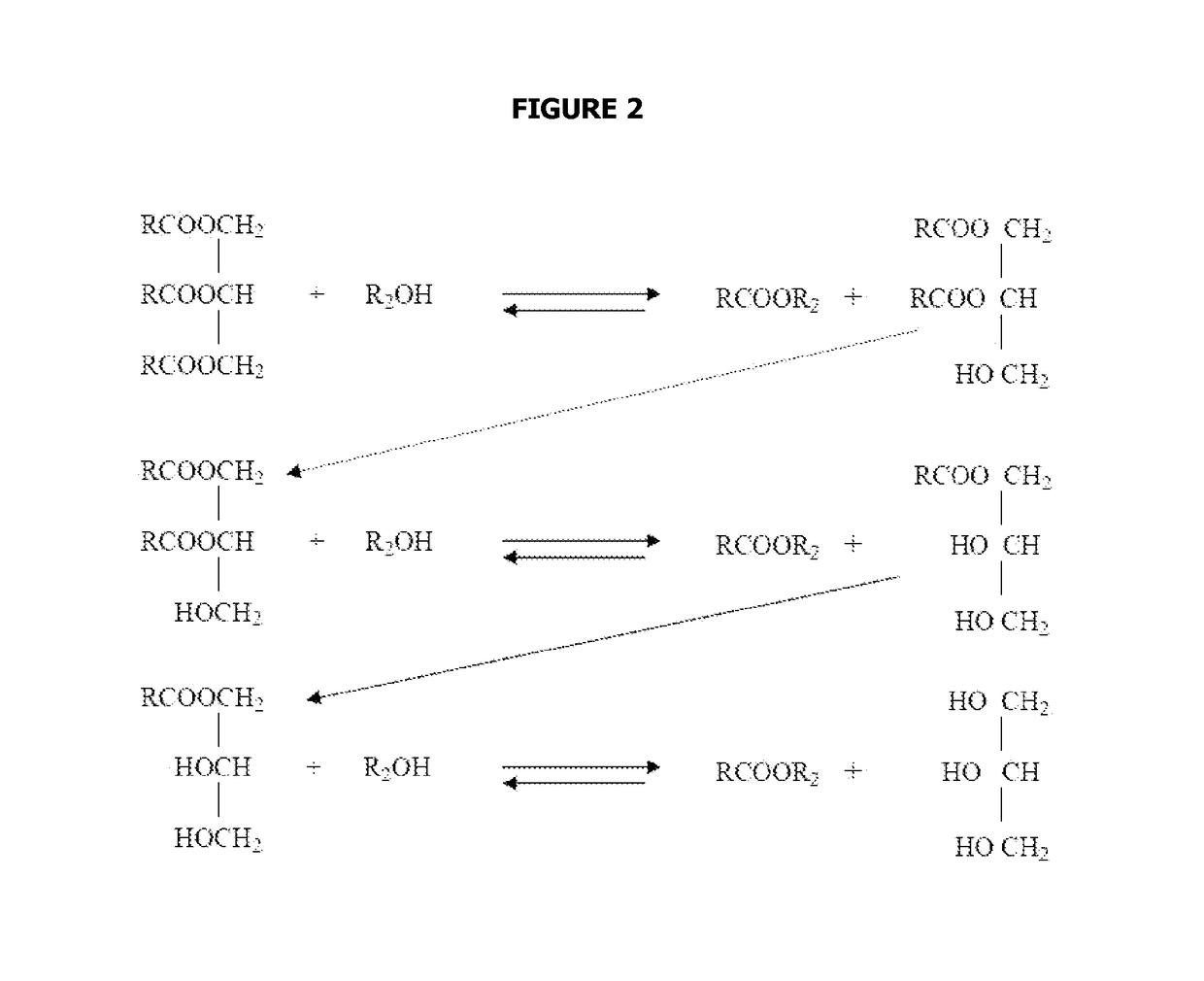Reaction system for producing fatty alkyl esters using a liquid-film reactor operated countercurrentwise
a technology of liquid film reactor and reaction system, which is applied in the direction of fatty acid chemical modification, organic chemistry, chemical/physical/physico-chemical processes, etc., can solve the problems of reducing productivity, reducing profit margin, and complicated separation
- Summary
- Abstract
- Description
- Claims
- Application Information
AI Technical Summary
Benefits of technology
Problems solved by technology
Method used
Image
Examples
Embodiment Construction
[0044]Table 1 shows the conditions of some of the palm oil methanolysis processes that were carried out in a bench-scale liquid film reactor that operated counter-current with a maximum capacity of 5 kg / h of oil. All of the reactions took place at 60° C. using sodium hydroxide as a catalyst at a concentration of 1% w / w with respect to the feeding flow of palm oil. The profile of methyl esters, monoglycerides, diglycerides, triglycerides, and methanol was determined for each of the reactions.
[0045]
TABLE 1Experimental conditions of examples of the palm oil methanolysis processthat was used for this patent.Methanol toMethanolPalm oil flowpalm oil molarfeeding pointReaction(g min−1)ratio(% V)a1CC32.85.847.72CC49.75.567.13CC32.95.738.0aPercentage of the total reactor volume measured from the top of the reactor.
[0046]FIGS. 3 through 5 show the concentration profiles that were obtained experimentally and those that were calculated using a model that was developed, fitted, and experimentall...
PUM
| Property | Measurement | Unit |
|---|---|---|
| diameters | aaaaa | aaaaa |
| diameters | aaaaa | aaaaa |
| volume fraction | aaaaa | aaaaa |
Abstract
Description
Claims
Application Information
 Login to view more
Login to view more - R&D Engineer
- R&D Manager
- IP Professional
- Industry Leading Data Capabilities
- Powerful AI technology
- Patent DNA Extraction
Browse by: Latest US Patents, China's latest patents, Technical Efficacy Thesaurus, Application Domain, Technology Topic.
© 2024 PatSnap. All rights reserved.Legal|Privacy policy|Modern Slavery Act Transparency Statement|Sitemap



